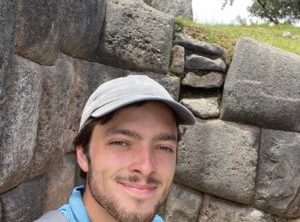The California Gold Rush has often been told as a story of a brief, environmentally benign, even romantic ‘rush’ that ended as quickly as it began. In truth, gold mining in California was highly extractive and industrial, and continued well into the 20th century. Over time, miners developed increasingly invasive means of getting at the gold, adding chemical additives like mercury and cyanide to make the process more efficient and bringing up toxic heavy metals like arsenic and lead in the process. These contaminants persist in the environment and are known to be harmful to human health. Today, there are 47,000 abandoned mines littered across California, many of which are gold mines concentrated in the appropriately named Gold Country region of the western Sierra Nevada mountains. Most of these sites were abandoned before federal and state laws required any sort of remediation of mining operations, and, in most cases, the companies and individuals who operated these sites are long gone. Though only a small percentage of these abandoned mines are contaminated, cleaning up toxic mines is a significant logistical, financial, and technical challenge. The ongoing efforts by government officials and community groups to clean up contaminated gold mines in Gold Country highlights many of the larger challenges of environmental remediation. At Argonaut Mine, an EPA Superfund site, the project manager contends with a “cultural blindness” to the impacts of gold mining and dangerously high levels of contamination that will take several years and millions of dollars to address. At Lava Cap Mine, another EPA Superfund site, those challenges are exacerbated by an ongoing legal battle to hold accountable those that contributed to the problem. Meanwhile, in Nevada City, community groups like Sierra Fund and Sierra Streams Institute are tackling the challenge of the thousands of smaller sites that will never make EPA’s Superfund list. They’re also illuminating the health risks facing residents of Gold Country and the state’s failure to regulate the buying and selling of abandoned mines. In an era of climate change, with new mining proposals under consideration, California must finally confront the toxic legacy of the Gold Rush.
Leah Campbell
Leah Campbell first became fascinated by disasters after Hurricane Katrina. That storm opened her eyes to how unnatural “natural” disasters are, sparking her interest in the relationship between social systems and the physical world that shapes them.
She majored in geology and geophysics at Yale, where she did research in seismology and earthquake risk. After college, she began grappling with the greatest disaster of all—climate change—and moved into the environmental sciences, doing fisheries research in Bristol Bay, interning with the National Park Service on shoreline change monitoring, and working for environmental nonprofits in California on projects ranging from fuels reduction to water quality and sea level rise.
She began a PhD in urban planning, focused on hazard mitigation, disaster recovery, and stormwater management, but decided that she was less interested in doing research than in communicating it. She plans to pursue a career in environmental writing to educate the public about risk and climate resilience, and to elevate the work of citizen scientists around green infrastructure, urban flooding, and environmental justice.




